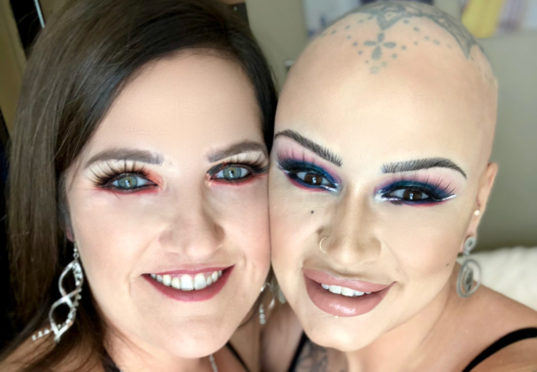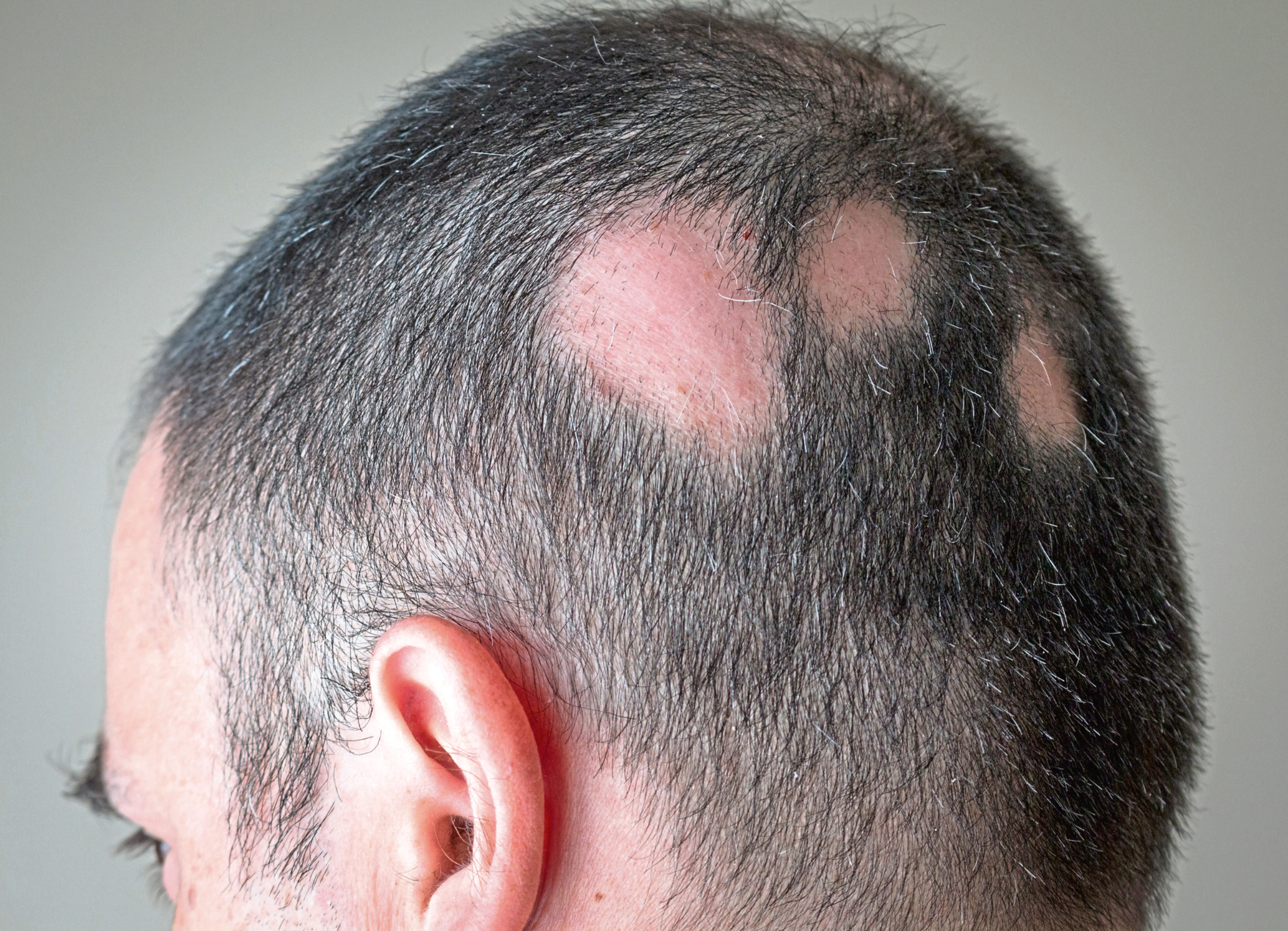
I was getting ready for work when I first noticed chunks of my hair coming out in the shower.
It was 2015 and I had recently started a new career as a critical care nurse, working in an intensive care unit.
I loved my job and life was good but that morning marked the beginning of my hair loss journey.
I think I must have been in shock because I stuck a headband on and went to work as if nothing had happened.
But the next day I went to see my GP. He said he thought I had alopecia and that it was hard to know whether the hair would grow back or if I would lose more.
Two days later, I had my answer when I was brushing my hair and another big chunk came out from the front of my head.
Within six weeks, I went from being a normal, hairy person to having not a single hair on my body. I was like an egg.
I have four beautiful children and I’ll never forget the sadness in their eyes when they first saw their mum bald.
Then, when my eyelashes fell out I was distraught. I just looked in the mirror and thought, “I don’t even know who that is any more”.
I made my husband Ross take down all of the mirrors because I didn’t want to see my reflection. When you look in a mirror, that is the physical part of your identity. That rapidly changed for me and I felt I had lost myself.
I felt broken but also selfish because I was not actually sick. Everybody was asking if I had cancer.
Then I came across Alopecia UK, and they were amazing. I didn’t realise there are so many bald people out there – most wear wigs. I felt I had to get involved.
One thing led to another and I ended up with a YouTube channel, doing my own make-up tutorials and wig reviews.
I also got a head tattoo with my best friend Paula Courtney (pictured with me above) on the MTV show Just Tattoo Of US. She chose a butterfly tattoo for me – a symbol of change and growth and beauty.
I chose an angel for her because she has been an angel to me. She has always been there for me.
I felt like I was coming to terms with everything.
Then, in the week before Christmas, 2016, I was unwell with asthma. I stopped breathing and ended up in intensive care on a ventilator. It was pretty bad.
It took me a long time to get back on my feet, but when I ended up back in intensive care a couple of months later, I realised that I wouldn’t be able to work full-time anymore.
It was devastating because I had gone back to university later in life to become a nurse.
With the support of my family, I eventually went back to work but was only able to do two 12-hour shifts each week.
Amazingly, though, it opened up an opportunity. I had been in touch with a couple of people from wig manufacturing companies through my reviews.
One suggested I start my own wig business. She believed in me, and my friends said I should go for it. So I thought, “Yeah, I’m going to do it!”
MiMo Wigs was launched in 2017.
I also started a wig bank because, when I was diagnosed with alopecia, I had a secondhand wig because I didn’t have the money.
One of the wig companies in America gave me their samples and clients who didn’t want their wigs anymore donated theirs.
Whether they are new or pre-loved and rejuvenated, I sell them for £20 and 100% of the money goes to Alopecia UK.
It’s great that something really rotten can become something really good.
I have met a lot of amazing people since I lost my hair.
I have customers in Australia, America, South Africa, and Europe. Most of them have found me by watching a review on YouTube.
Someone contacted me to say she had seen me online. She said I seemed a bit crazy but, if that crazy girl was OK with being bald, she could definitely accept it. I thought that was amazing.
It just goes to show that you cannot always control what happens to you in life.
But, instead of getting hung up on my problems, I could see them as an opportunity.
I am still here to tell the tale, I still get to do the job I love. But I also have my own business and I can help other people who are going through hair loss and struggling the way I did at the beginning.
I feel lucky and am happier with myself than I have ever been before. I am more accepting of myself because, whether I am all made up with my wig on, or bald as an egg, I am the same girl. I’m still Michelle.
Alopecia at a glance

There are a number of types of Alopecia.
Alopecia Areata (AA) is an incurable condition in which the immune system mistakenly attacks the hair follicles leading to hair loss. It can result in complete baldness (Alopecia Totalis) or the total loss of the body’s hair (Alopecia Universalis).
AA is not permanent as it doesn’t destroy the follicles, which means the hair may grow again.
But if it develops to either Totalis or Universalis, the chances of full regrowth become smaller.
Treatments are available but are not guaranteed to work.
Genetics play a part and about 20% of sufferers have a family member with the condition or with other autoimmune or atopic conditions such as asthma or eczema.
Androgenetic Alopecia (male pattern hair loss) is the most common type of hair loss in men over the age of 50.
But it can affect younger people, too. It is caused by genetic and hormonal factors and leads to permanent and irreversible hair loss. While it cannot be cured, treatments are available to slow it down.
Help and support is also available from alopecia.org.uk

Enjoy the convenience of having The Sunday Post delivered as a digital ePaper straight to your smartphone, tablet or computer.
Subscribe for only £5.49 a month and enjoy all the benefits of the printed paper as a digital replica.
Subscribe